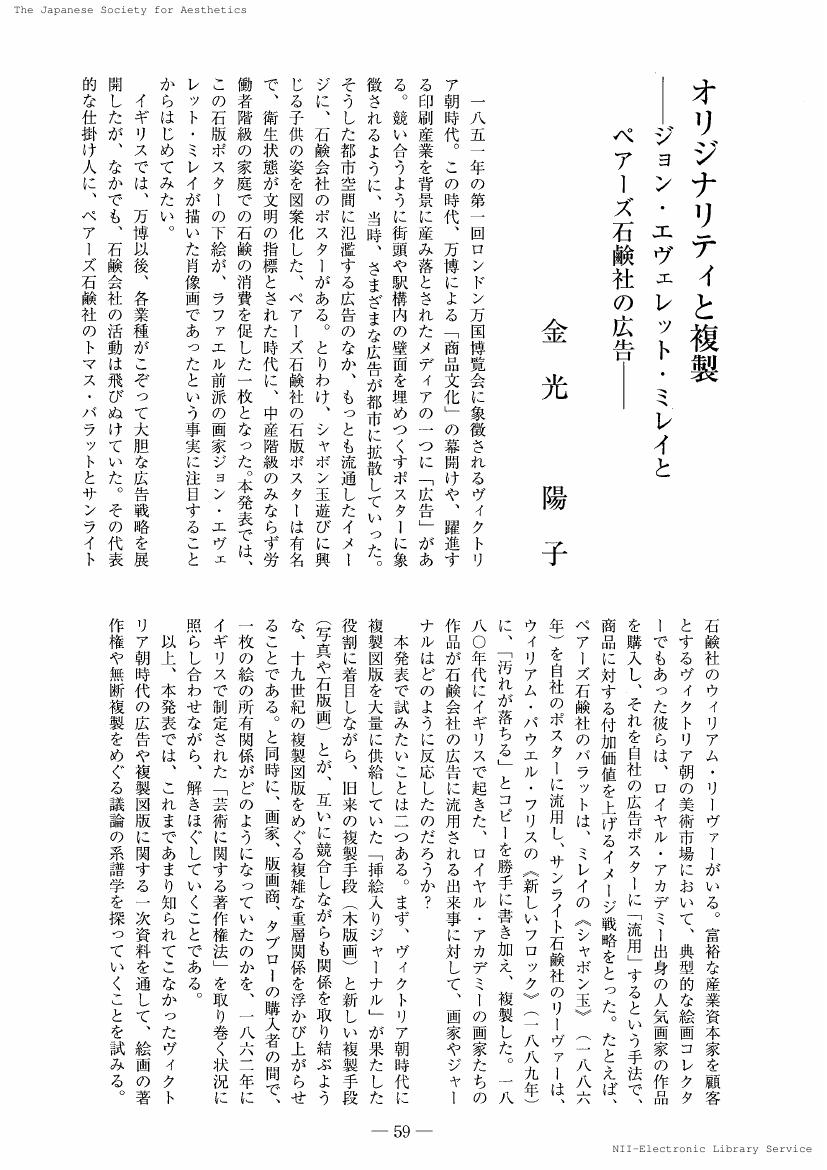2 0 0 0 OA オリジナリティと複製 : J・E・ミレイの《シャボン玉》とペアーズ石鹸の広告
- 著者
- 金光 陽子
- 出版者
- 美学会
- 雑誌
- 美学 (ISSN:05200962)
- 巻号頁・発行日
- vol.58, no.2, pp.29-42, 2007-09-30 (Released:2017-05-22)
This paper examines John Everett Millais's painting Bubbles, 1886, and associated reproduction. The Victorian era saw a flowering of reproduced images of paintings in parallel with the spread of photography and illustrated journals. Bubbles, showing a boy with a pipe blowing soap bubbles, was particularly disseminated as an iconic image of Victorian 'childhood' or 'cleanliness' through reproductions for Pears Soap advertisements. The aim of this paper is to situate Bubbles in diverse contexts of new and old print-making technologies and copyright, disentangling the complex interrelationships between painters, print-sellers and owners of paintings. In Britain, it was not until 1862 that a Copyright Act appeared to protect paintings. Through an examination of the historical and legal contexts surrounding the Fine Arts Copyright Act, this paper clarifies the reason that Bubbles was placed 'automatically' in the so-called 'public domain'. To date, particular emphasis has been put on the fact that Millais was outraged by the unofficial addition of a bar of Pears Soap to Bubbles. Yet in fact, Millais did not at all object to the appropriation of the painting for advertising purposes, so that it enabled numerous lower-middle class and working-class people to enjoy the image of Bubbles for free.
- 著者
- 金光 陽子
- 出版者
- 美学会
- 雑誌
- 美学 (ISSN:05200962)
- 巻号頁・発行日
- vol.56, no.3, pp.59, 2005-12-31 (Released:2017-05-22)
